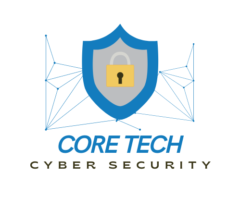Software as a Service (SaaS) applications have become integral to business operations, providing flexibility and efficiency. However, securing these applications is crucial to protecting sensitive data and ensuring compliance with regulatory standards. Here’s a comprehensive guide on how to secure your SaaS applications effectively.
1. Implement Strong Access Controls
Access control is fundamental to SaaS security. Ensure that only authorized personnel have access to your applications and data.
- Use Multi-Factor Authentication (MFA): Add an extra layer of security by requiring users to verify their identity with a second form of authentication. Consider solutions like Okta for robust MFA and identity management.
- Implement Role-Based Access Control (RBAC): Assign roles and permissions based on user responsibilities to minimize access to sensitive information.
Set up strong access controls to protect your SaaS applications from unauthorized access.
2. Regularly Update and Patch Software
Keeping your SaaS applications up-to-date is essential for security. Regular updates and patches address vulnerabilities that could be exploited by cybercriminals.
- Monitor Vendor Updates: Stay informed about updates and patches released by SaaS providers.
- Apply Updates Promptly: Ensure that updates are applied in a timely manner to protect against newly discovered vulnerabilities.
Learn how to manage updates and patches to keep your SaaS applications secure.
3. Encrypt Sensitive Data
Encryption protects data by making it unreadable to unauthorized users. Ensure that sensitive data is encrypted both in transit and at rest.
- Use TLS/SSL Encryption: For data in transit, ensure that your SaaS applications use secure protocols like TLS or SSL.
- Encrypt Data at Rest: Ensure that data stored in your SaaS applications is encrypted to prevent unauthorized access.
Explore encryption solutions to safeguard your sensitive data.
4. Conduct Regular Security Audits
Regular security audits help identify vulnerabilities and ensure compliance with security policies and regulations.
- Perform Vulnerability Assessments: Regularly scan your SaaS applications for vulnerabilities and address any issues found.
- Conduct Penetration Testing: Engage in periodic penetration testing to simulate attacks and identify potential weaknesses.
Schedule regular security audits to maintain a strong security posture.
5. Implement Data Backup and Recovery Solutions
Data loss can have severe consequences for businesses. Implement robust backup and recovery solutions to ensure you can quickly recover from data loss incidents.
- Automate Backups: Schedule regular automated backups to ensure that your data is consistently protected.
- Test Recovery Procedures: Regularly test your data recovery procedures to ensure they work effectively in the event of a data loss.
Discover data backup and recovery solutions to protect your business from data loss.
6. Monitor and Log Activity
Monitoring and logging user activity can help detect and respond to potential security incidents.
- Enable Logging: Ensure that your SaaS applications have logging capabilities to record user activities and access.
- Monitor for Anomalies: Use security information and event management (SIEM) tools to monitor logs and detect unusual activities.
Implement monitoring and logging solutions to enhance your security oversight.
7. Educate and Train Users
User behavior is a critical factor in security. Provide regular training to ensure users understand security best practices and potential threats.
- Conduct Security Awareness Training: Educate users about phishing, social engineering, and other common threats.
- Promote Secure Practices: Encourage users to use strong passwords and report suspicious activities.
Explore user training programs to enhance your organization’s security awareness.
8. Choose a Reliable SaaS Provider
Selecting a SaaS provider with a strong security track record is crucial for ensuring the security of your applications.
- Evaluate Security Certifications: Choose providers that comply with industry standards and hold relevant security certifications.
- Review Security Policies: Ensure that the provider’s security policies align with your organization’s requirements.
Find the right SaaS provider to ensure robust security for your applications.
Conclusion
Securing your SaaS applications involves a multi-faceted approach, including implementing strong access controls, encrypting sensitive data, and conducting regular security audits. By following these best practices, you can protect your applications and data from potential threats and ensure a secure operational environment.
Implement these strategies today to enhance the security of your SaaS applications and safeguard your organization’s valuable data.
